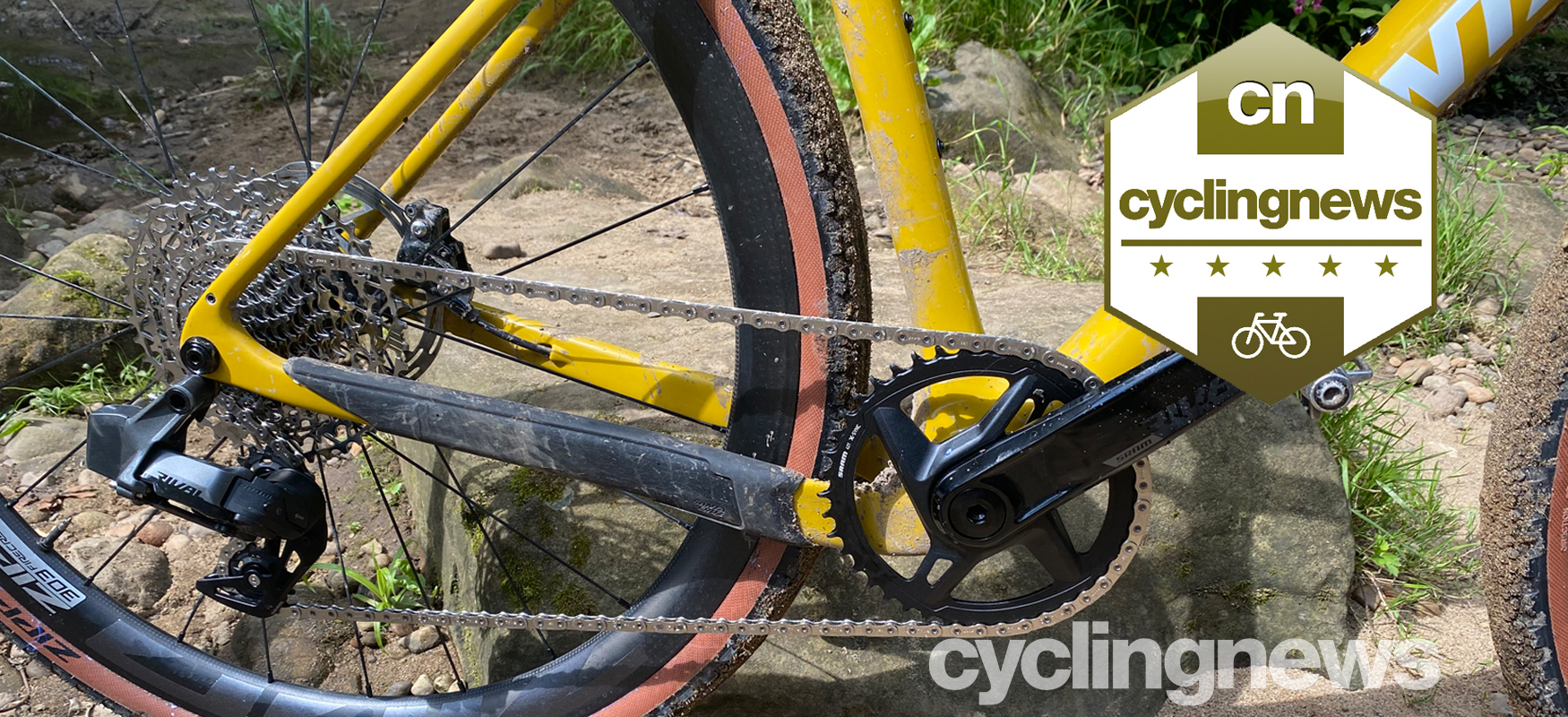Cyclingnews Verdict
SRAM’s existing AXS wireless wonderland hits the single-ring gravel-gearing sweet spot to become our new affordable price benchmark
Pros
- +
Sweetspot gear range
- +
Superb shifting and chain security
- +
AXS wireless convenience and comms
- +
Lighter than wide range
- +
Smaller gaps than Eagle
- +
Big tyre and Boost axle compatible
- +
Cross groupset AXS versatility
- +
Durable steel elements
- +
Impressive pricing for the tech you get
Cons
- -
Less overall gearing range than Wide range or Eagle cassettes
- -
No MTB crash 'decouple'
- -
Heavier than Force
You can trust Cyclingnews
There’s been an obvious gap between the 10-36T and 10-50T cassette ratios that exist within SRAM's 1X setups for a while. The new XPLR - pronounced 'explore' - slides right into the existing SRAM road groupsets wireless AXS ecosystem. The result is a groupset that provides ample gear range for steeper sections of trail, while saving significant weight over the existing SRAM Wide Range 2X groupset, or a ‘mullet’ set up which blends the bigger cassettes of SRAM's Eagle mountain bike components with drop-bar friendly road shifters.
Rival AXS continues to offer seamless performance in a cost-effective cable-killing package too, making it a brilliant pairing for the best budget gravel bikes.
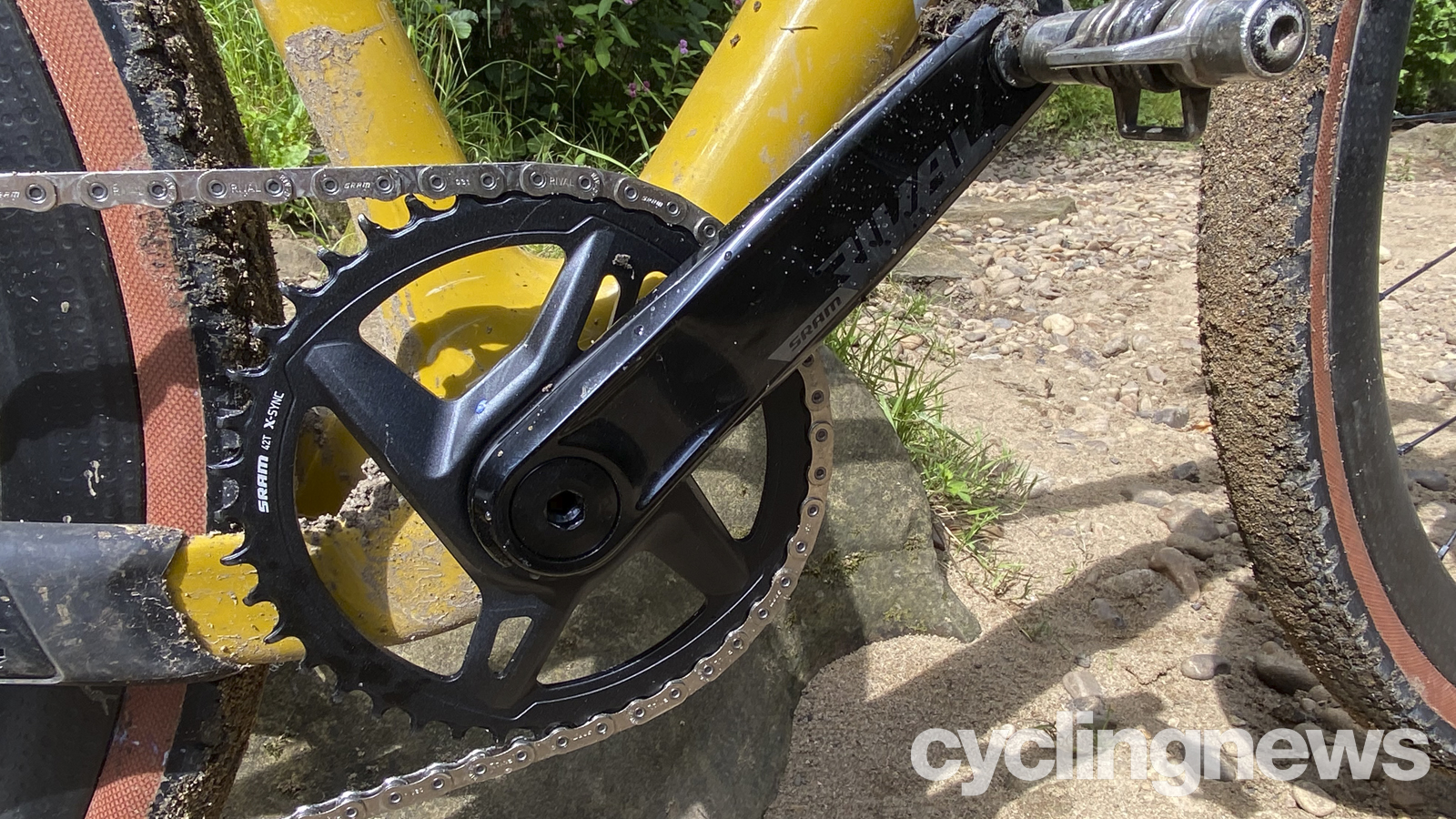
SRAM Rival XPLR Chainset
Unlike Red and Force 1X, the Rival AXS 1X chainset was already direct mount using a new eight-bolt pattern (so not the same as MTB). The ring comes in 38, 40, 42, 44 and 46T options with XSYNC2 narrow-wide profiling. The 3D shaping looks really neat and it saves 32-35g over a separate ring and spider combo. That brought our 42T sample in at 719g (133g lighter than Rival wide range 2X).
It can be upgraded to the power meter variant in the same way and it also uses the ‘Wide’ axle length and bottom bracket so it can be used with Boost (148mm) back end bikes and wider tyres. Rival also comes in the widest range of crank lengths, with options from 160mm up to 175mm available.
In terms of performance, the DUB axle with sculpted arms and ring feel super solid underfoot and our previous Rival cranks have lasted really well in terms of scuffing.
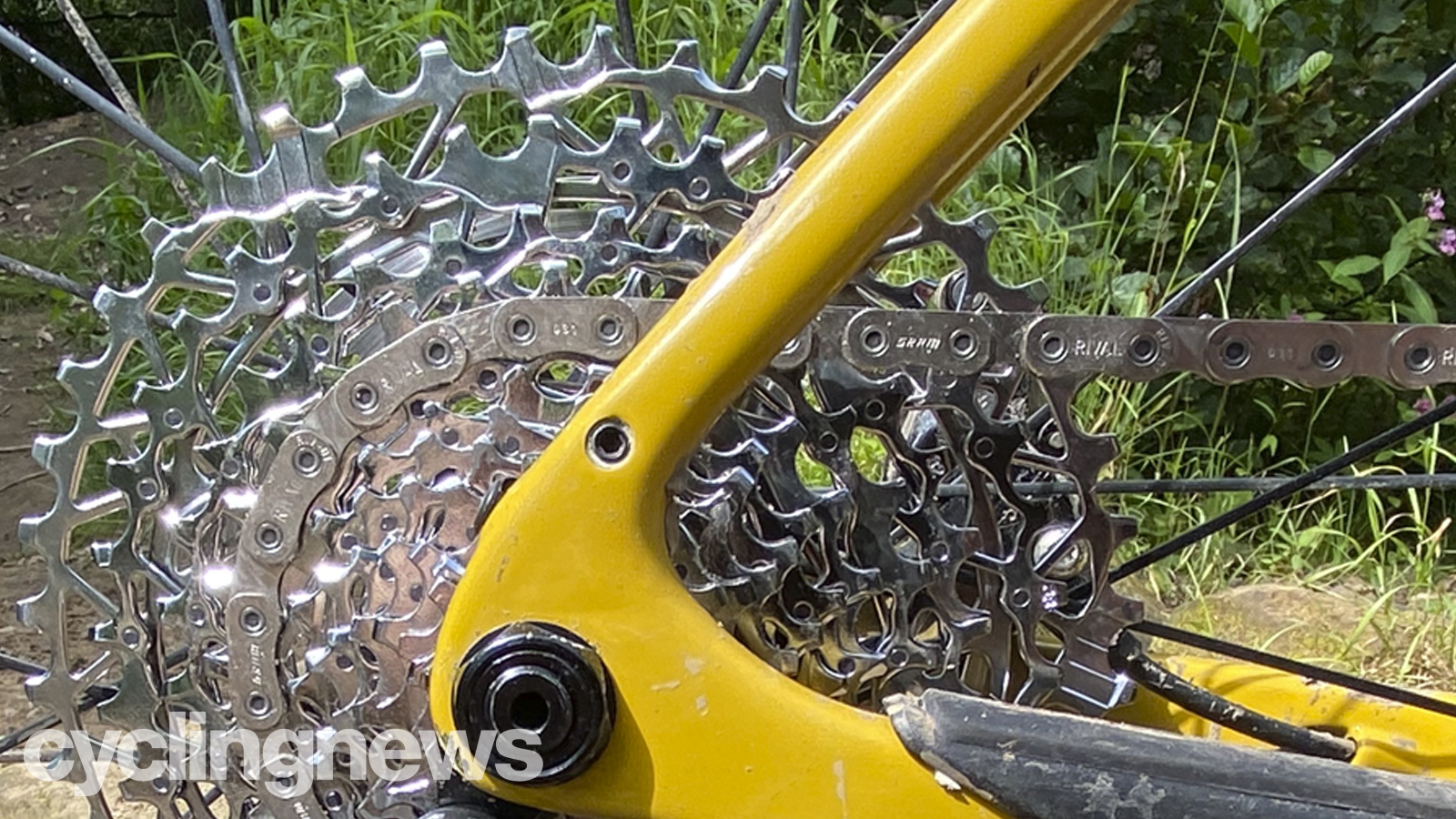
SRAM XPLR XG-1251 cassette
Riders have been clamouring for a 10-42T cassette to match the old 11-speed setup for ages but SRAM has notched it up a bit (and trumped Shimano) by taking the new XPLR cassette to 10-44T. The XG-1251 Rival cassette is all nickel-plated steel so it’s 28g heavier than the XG-1271 Force cassette with its alloy outer sprocket but at 417g, it’s still a massive 198g lighter than an 11-50T NX Eagle cassette.
The ratio gaps are obviously smaller than Eagle and the 11-speed Shimano gravel groupsets, too. While we’ve only just started riding with the XPLR cassette, we expect the nickel-plated steel to last as well as it has on Rival Wide Range and shifting is quietly flawless.
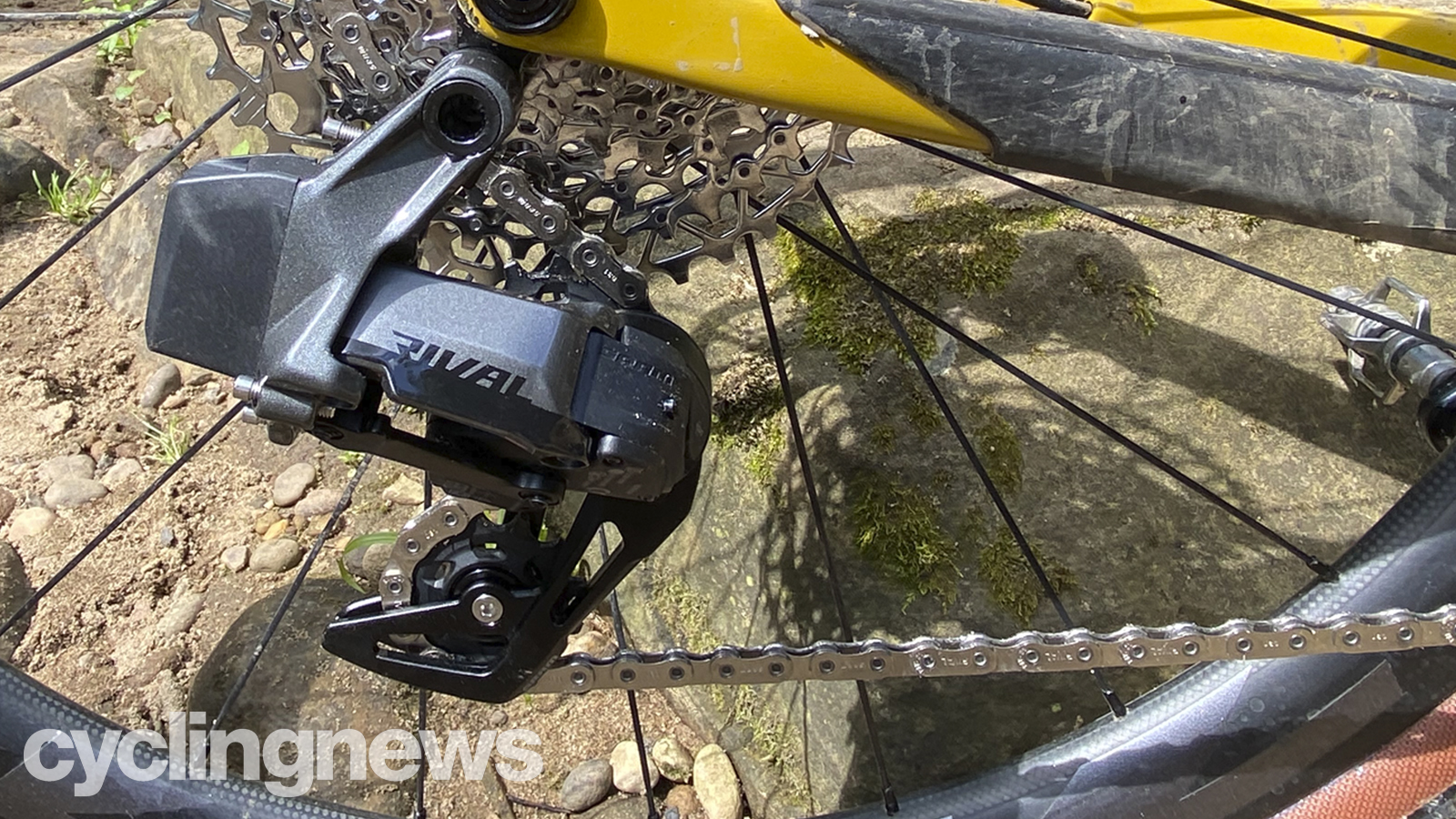
SRAM Rival eTap AXS XPLR rear derailleur
XPLR rear derailleurs get a new upper ‘B knuckle’ and offset top jockey wheel to handle the larger cassette but otherwise, the mixed metal structure is the same.
That offset top jockey wheel helps it follow the arc of the larger cassette, but it does mean it's no longer 2X compatible, so you'll be limited to just two cassette sizes - the new XPLR 10-44T cassette, or the existing 10-36T.
At the Red level, you get an alloy cage (rather than carbon), so the overall weight gap between top-spec Red XPLR and bottom-spec Rival XPLR is reduced.
The motor, gearbox, transmitter and battery of the AXS elements are the same on all models. The quiet whisper about Rival Wide Range was that the spring clutch (same as the MTB mechs) actually seemed to make it smoother and quieter shifting than Red and Force. We’ve not tested the different XPLR versions back to back yet, but we can certainly confirm that it feels impressively swift and crisp through the wireless shifters. There’s obviously no lurching up or down across different chainrings compared to wide range either.
Before you think of using the XPLR derailleur on a mountain bike (or fully MTB style riding) remember it doesn’t have the crash dislocation feature of the Eagle AXS units, so the chance of gearbox or other ‘write-off’ damage is much higher in the event of a crash.
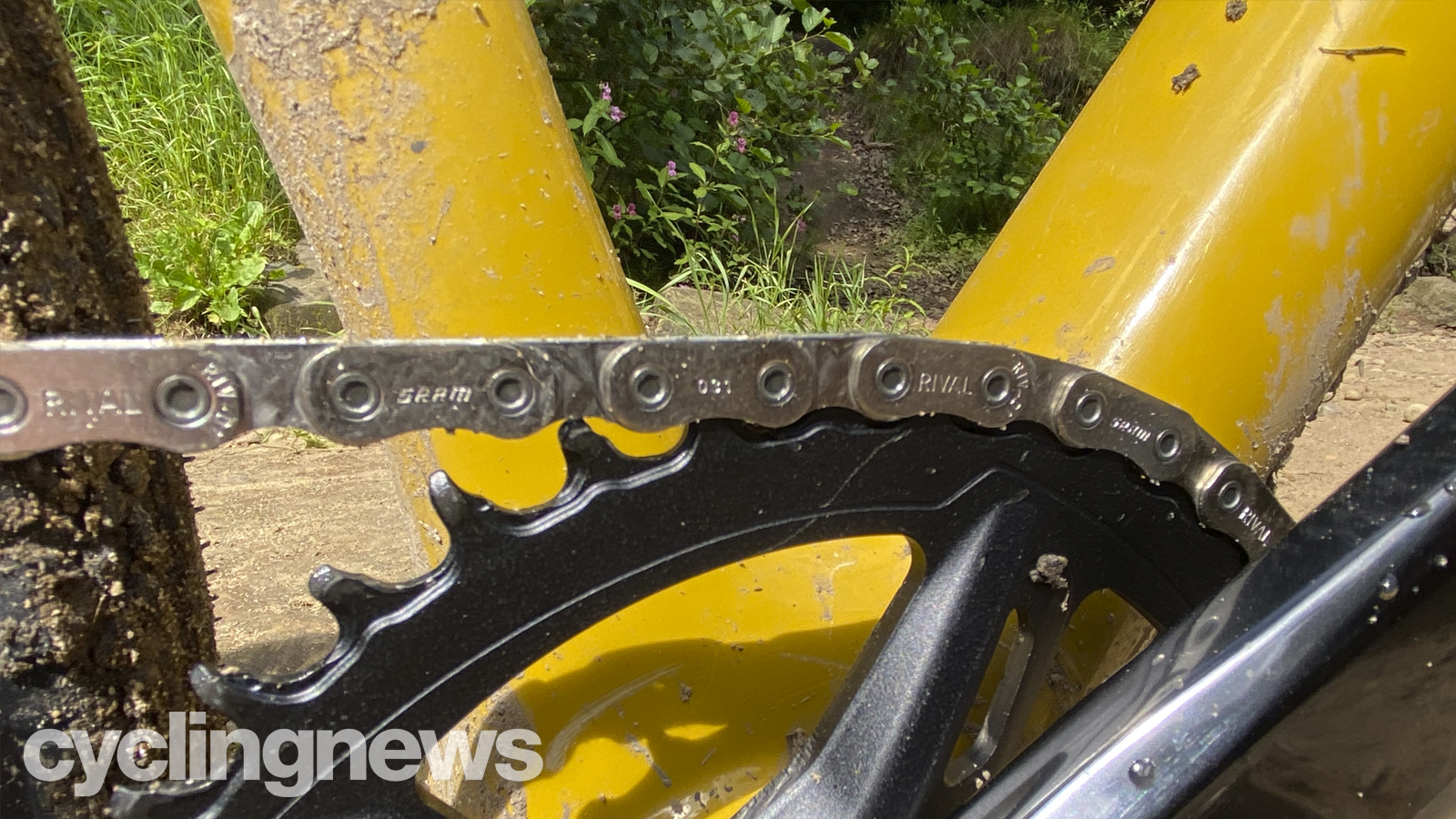
Chain
The signature flat-top chain is the same as other Rival setups and we’ve nothing to report but good news about the durability and drop dead gorgeous looks of that design even in the filthiest conditions.
Overall verdict
The whole SRAM 1x and AXS wireless ecosystem is well proven and totally sorted now, so it’s no surprise that this ‘sweet-spot’ gearing option works superbly even at the most affordable Rival level.
It’s worth re-iterating the extra benefits of AXS in terms of clean, cable-free servicing and fitting convenience, as well as the aesthetics and the useful post-ride feedback and upcoming service interval features within the app. Oh and the fact that everything - including the new Reverb AXS XPLR dropper post - plays nicely together, whether you’re running Red through to Rival on road/gravel or XX1 to GX off-road gives it huge versatility and more options in this era where spares are hard to come by.
While XPLR can’t match the range of Wide Range with its 43/30T chainrings and 10-36T cassette, you can get almost as low with a 38T chainring and significantly higher with a 46T ring. The bigger cassette is less likely to get filled with grass and gunk, and with the simplicity of a 1X setup, you won't be met with any extreme-chainline issues or clunky front-mech shifting either.
The 245g weight saving and £179 cost-saving are big advantages over Rival Wide Range too and it’s obviously got the 11 v 12 speed and AXS wireless advantages over Shimano GRX as well.
Tech Specs: SRAM Rival eTap AXS XPLR
- Weight: Chainset 719g | Rear derailleur 330g | Cassette 417g
- Price: Chainset £322, $349, €360 | Rear derailleur £236, $255, €265 (plus £50, $/€55 battery) | Cassette £145, $150, €160
